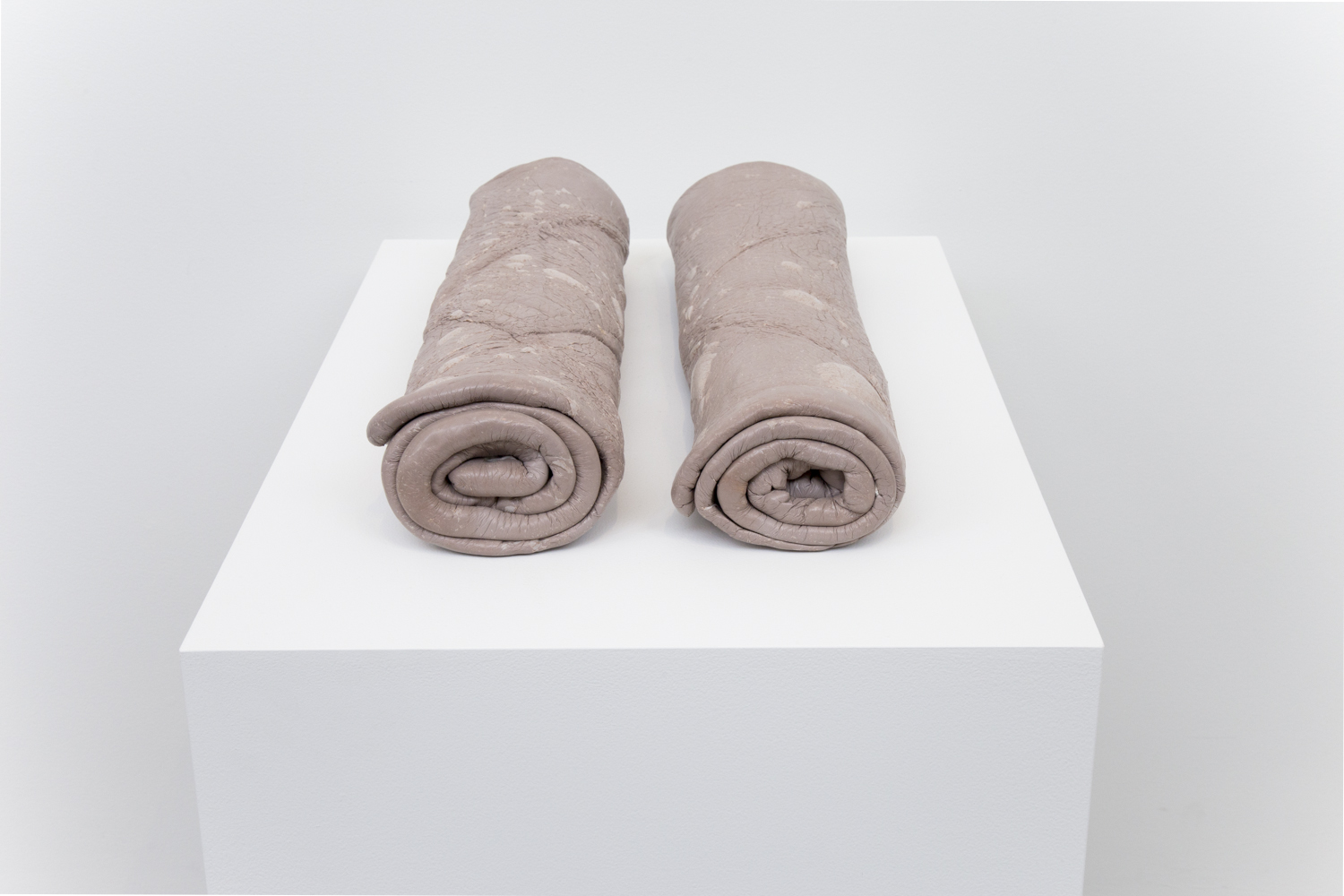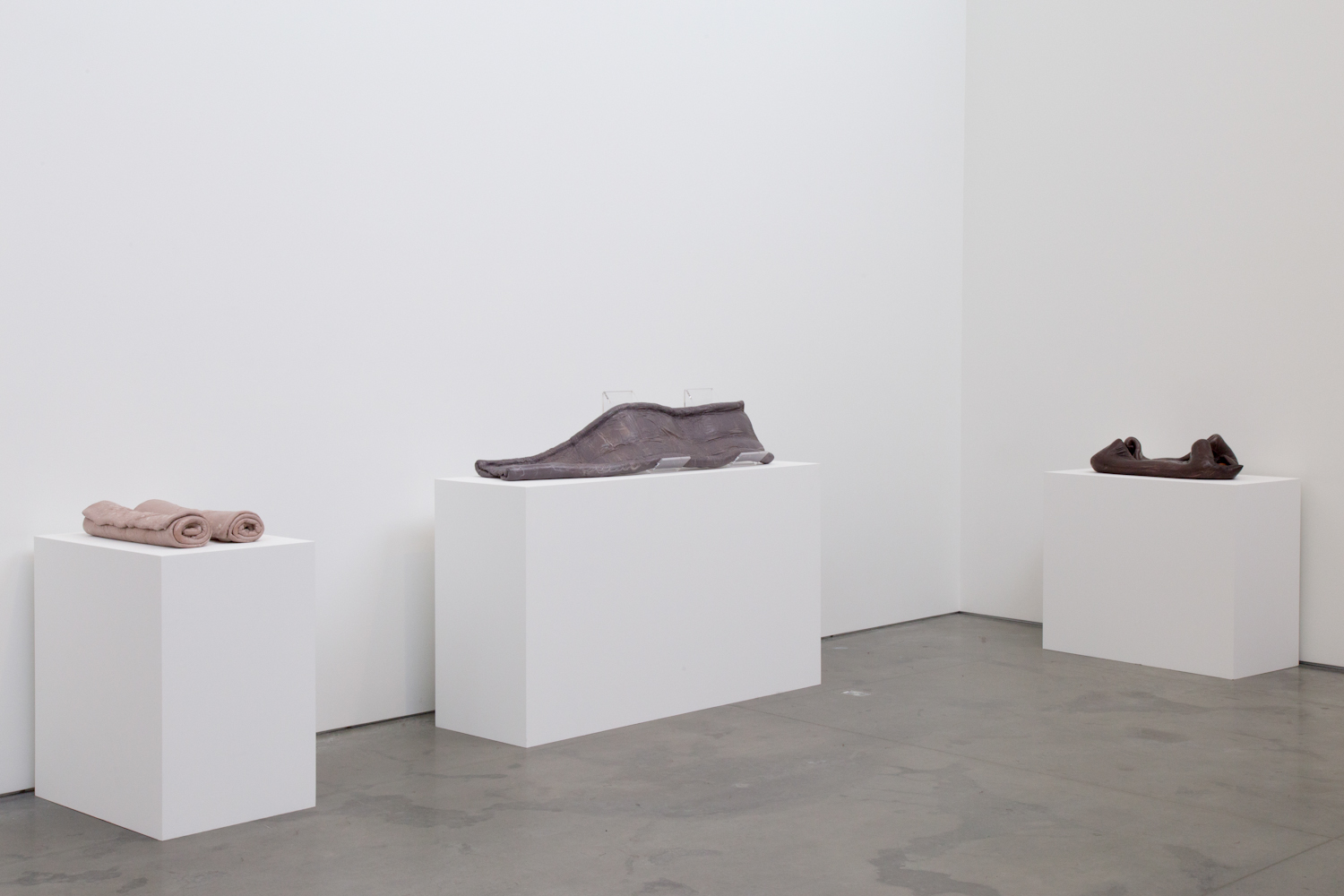





Takming Chuang’s sculptures address the human body’s natural, yet culturally dreaded impermanence to examine broader relationships between change and control. In his previous works, the artist made prints of temporary marks that were impressed onto the elastic surface of his skin. He also stained brass wedges with his body after working out at the gym, dulling the reflective surface with sweat and sebum that oxidize over time. These processes delivered a critique of fitness culture in a society that values youth and productivity over the grace and inevitability of aging.
As an MFA student at UC Berkeley, Chuang has further developed his sculptural vocabulary with unfired clay. Realizing that preservation is a tactic to fend off (or perpetuate) anxieties associated with change, he tightly wraps the unfired forms in plastic to prolong their wet and malleable state. As a result of these protective efforts, the objects remain ironically unstable. Within their polyethylene sheath, the natural process of change endures: the clay shrinks and hardens, forming wrinkles and blisters on the surface. The artist considers the fact that clay is a geologic substrate whose lifespan outlasts conceptions of history and time. These clay bodies hint at asynchronous timescales: the immediacy of their surfaces recalls human flesh, yet the earthy body of clay itself will endure through the flow of the ages.
Unfired clay is uniquely nonutilitarian. Unlike a finished ceramic product,
it cannot support any weight, nor is it airtight. As long as they may last, the artist’s sculptures emphasize inevitable change and entropy in spite of preservation tactics. The inability to preserve is far from a failure; rather, Chuang’s sculptures beautifully demonstrate a sense of value in the inescapable nature of impermanence.
Matthew Coleman & Stephanie Cannizzo
Berkeley Art Museum and Pacific Film Archive
Exhibition Text
As an MFA student at UC Berkeley, Chuang has further developed his sculptural vocabulary with unfired clay. Realizing that preservation is a tactic to fend off (or perpetuate) anxieties associated with change, he tightly wraps the unfired forms in plastic to prolong their wet and malleable state. As a result of these protective efforts, the objects remain ironically unstable. Within their polyethylene sheath, the natural process of change endures: the clay shrinks and hardens, forming wrinkles and blisters on the surface. The artist considers the fact that clay is a geologic substrate whose lifespan outlasts conceptions of history and time. These clay bodies hint at asynchronous timescales: the immediacy of their surfaces recalls human flesh, yet the earthy body of clay itself will endure through the flow of the ages.
Unfired clay is uniquely nonutilitarian. Unlike a finished ceramic product,
it cannot support any weight, nor is it airtight. As long as they may last, the artist’s sculptures emphasize inevitable change and entropy in spite of preservation tactics. The inability to preserve is far from a failure; rather, Chuang’s sculptures beautifully demonstrate a sense of value in the inescapable nature of impermanence.
Matthew Coleman & Stephanie Cannizzo
Berkeley Art Museum and Pacific Film Archive
Exhibition Text